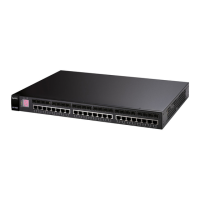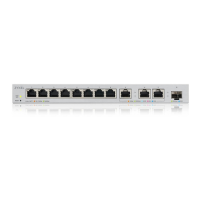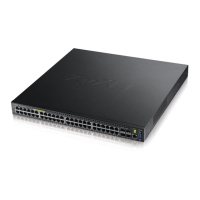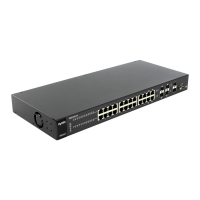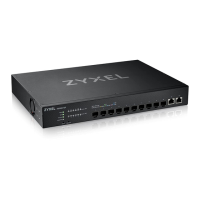XGS2220 Series User’s Guide
533
CHAPTER 78
MAINTENANCE
78.1 Overview
This chapter explains how to configure the screens that let you maintain the firmware and configuration
files.
78.1.1 What You Can Do
• Use the Certificates screen (Section 78.2 on page 533) to see the Certificate screen and import the
Switch's CA-signed certificates.
• Use the Cluster Management screens (Section 78.5 on page 538) to manage the switches within a
cluster and view cluster status.
• Use the Restore Configuration screen (Section 78.8 on page 543) to upload a stored device
configuration file.
• Use the Backup Configuration screen (Section 78.9 on page 543) to save your configurations for later
use.
• Use the Auto Configuration screen (Section 78.10 on page 544) to overwrite the running configuration
stored in the Switch’s RAM.
• Use the Erase Running-Configuration screen (Section 78.11 on page 545) to reset the configuration to
the Zyxel default configuration settings.
• Use the Save Configuration screen (Section 78.12 on page 546) to save the current configuration
settings to a specific configuration file on the Switch.
• Use the Configure Clone screen (Section 78.13 on page 547) to copy the basic and advanced
settings from a source port to a destination port or ports.
• Use the Diagnostic screen (Section 78.14 on page 548) to ping IP addresses, run a traceroute, perform
port tests or show the Switch’s location between devices.
• Use the Firmware Upgrade screen (Section 78.15 on page 550) to upload the latest firmware.
• Use the Reboot System screen (Section 78.16 on page 552) to restart the Switch without physically
turning the power off and load a specific configuration file.
• Use the Tech-Support screen (Section 78.17 on page 553) to create reports for customer support if
there are problems with the Switch.
78.2 Certificates
The Switch can use HTTPS certificates that are verified by a third party to create secure HTTPS
connections between your computer and the Switch. This way, you may securely access the Switch
using the Web Configurator. See Section 66.5.2 on page 449 for more information about HTTPS.
Certificates are based on public-private key pairs. A certificate contains the certificate owner’s identity
and public key. Certificates provide a way to exchange public keys for use in authentication.
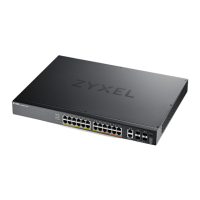
